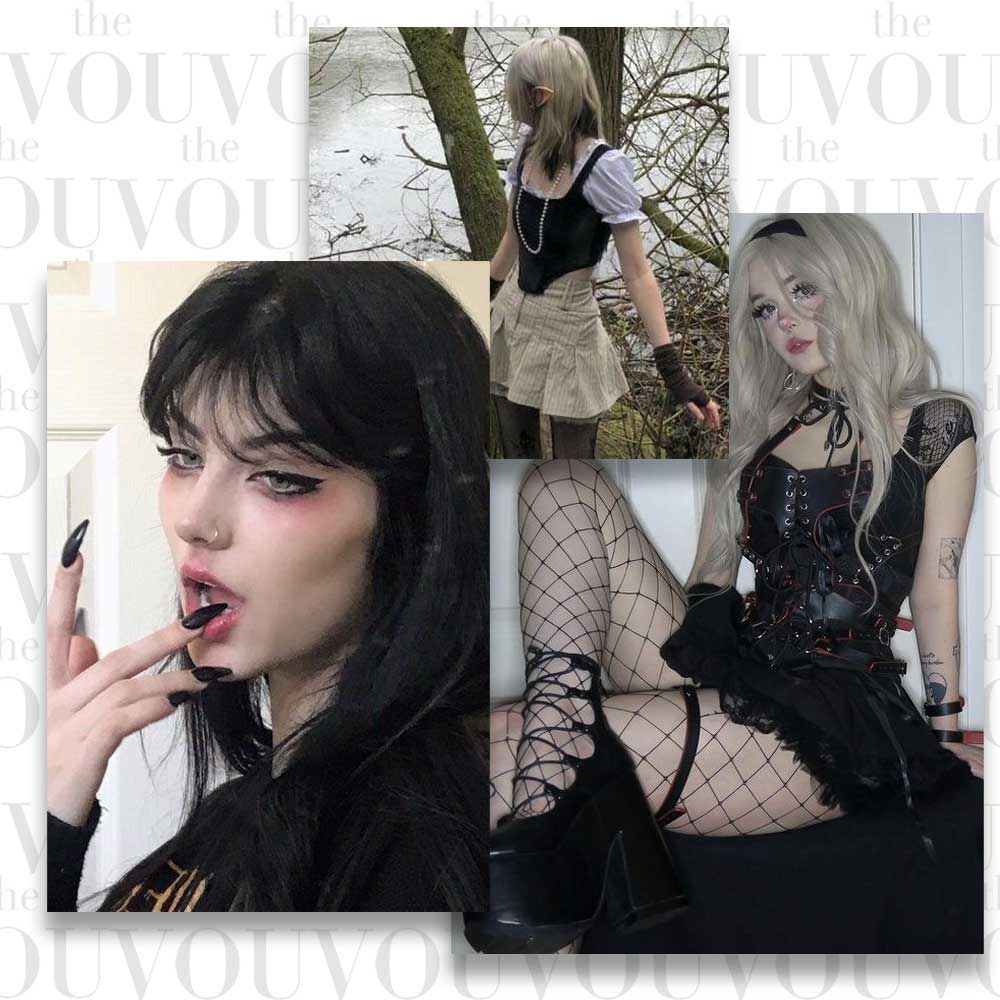Kinderwhore vs Fairy Grunge: 3 Key Differences and Similarities
What is Kinderwhore?
Kinderwhore, a term coined by music journalist Everett True in a 1993 interview with Courtney Love and Kurt Cobain, describes a fashion style that deliberately contrasts between girlish innocence and overt sexuality.
In parallel with Grunge fashion, Kinderwhore became an aesthetic in its own right, with figures like Courtney Love of Hole popularizing the look.

”When I started Kinder-whore it was more of a ‘What Ever Happened to Baby Jane?’ kind of thing, But with an ironic angle. Now, I think, I’m TOUCHING some psychosexual aspects of rock music,”
said Courtney Love in a 1994 Rolling Stones interview.
Popular outfits comprise babydoll dresses in floral or plaid patterns, ripped stockings or knee-high socks, and chunky shoes like Mary Janes or combat boots, accessorized with chokers, barrettes, and tiaras.
The color palette ranges from pastels to stark black and white, emphasizing the dichotomy at the heart of the style. At the same time, bold makeup with dark eyeliner and red lips intensifies the intended shock value.
By blending (“kinder” or childlike) with (“whore” or sexualized), the Kinderwhore style depicts a provocative image, challenging norms and creating a powerful statement on the commodification of female sexuality and autonomy in the music industry and beyond.
What is Fairy Grunge?
Also rooted in the rebellious spirit of Grunge music, the Fairy Grunge style is a contemporary way of dressing that infuses Grunge fashion with ethereal and mystical aesthetics and visuals.
As a natural evolution from the Kinderwhore aesthetic, Fairy Grunge adopts the latter’s Grunge foundation while forgoing its sexual undertones for a softer, more romantic vibe.

Characterized by vintage lace-trimmed slip dresses, floral maxi skirts, distressed knits, and fishnet or lace stockings, the style retains the grunge ethos; however, it is infused with fairy-like accessories like crystal necklaces and soft headpieces.
Also, in contrast to the starkness of traditional Grunge, the color scheme of Fairy Grunge leans towards earthy tones, dusty pastels, and muted jewel tones, creating a dreamy vibe.
Above all, Fairy Grunge is more than a fashion statement but a lifestyle choice depicting a connection to nature, a penchant for nostalgia, and a rejection of mainstream refinement in favor of a personalized look.
Kinderwhore and Fairy Grunge Similarities
- Rooted in Grunge: Both styles originate from the grunge movement of the ’90s, embodying the same spirit of rebellion against mainstream fashion.
- Vintage Influence: Each style incorporates vintage garments —Kinderwhore with babydoll dresses and Mary Janes; Fairy Grunge with lace-trimmed slips and floral dresses.
- Subversive Visuals: They share a penchant for subverting traditional fashion norms—Kinderwhore through sexualized innocence, Fairy Grunge through a blend of grunge and ethereal aesthetics.
Kinderwhore and Fairy Grunge Differences
- Visual Tone: The Kinderwhore style has an aggressive and confrontational look, while Fairy Grunge portrays a softer and more romantic image.
- Color Palette: Kinderwhore features stark contrasts like black and white, whereas Fairy Grunge uses earthy tones and dusty pastels.
- Fashion Statement: Kinderwhore’s fashion statement is tied to psychosexual aspects of rock music, challenging perceptions of femininity; Fairy Grunge leans into a nostalgic connection with nature and the supernatural.
Weekly Newsletter
Keep up with the latest in fashion, beauty and style!
source https://thevou.com/fashion/kinderwhore-vs-fairy-grunge/
Comments
Post a Comment